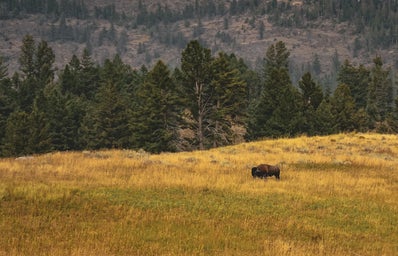Indigenous people have been wrongfully colonized, murdered, forgotten, and left behind by European colonizers and the United States for hundreds of years. Since the 2018 introduction of the Land Back Movement by Arnell Tailfeathers, a Blood Tribe or Blackfoot Confederacy member, during a rally at Mount Rushmore, the movement has tried to re-establish Indigenous political authority over territories previously owned by the Indigenous peoples of the United States and Canada.
So, what is land back and what does it mean for the future of Indigenous peoples?
As outlined from the Land Back Manifesto, Land Back is the “reclamation of everything stolen from the original peoples: land, language, ceremony, food, education housing, healthcare, governance, medicines, kinship” and the liberation and sovereignty of the Indigenous peoples (Land Back, n.d.).
This call for Land Back comes after centuries of Western governments and policies taking advantage of and removing Indigenous peoples from the historical narrative of society. This was done through the establishment of reservations, which moved Indigenous peoples from their ancestral homelands onto small, usually unusable plots of land in an effort to control and limit their communities. This was a part of the Indian Removal Act of 1831 where approximately more than 46,000 Native individuals were forcibly relocated to “Indian Territory” in Oklahoma (National Geographic Society, 2021). Indigenous communities were also victims of the Native Boarding School programs, established by the Civilization Fund Act in 1819. At these boarding schools, Christian missionaries would “teach” Native children the “habits and arts of civilizations”, while discouraging and eliminating traditional languages, cultures, and practices (Pember, 2019). These are just a small percentage of the issues that the Land Back Movement is demanding reparations for.
Some states and some federal government policies have started to recognize Land Back and return the political sovereignty their Indigenous tribes back. In December of 2020, President Donald Trump signed legislation to return the range that the U.S. government seized in 1908 from the Confederated Salish and Kootenai Tribes in western Montana. In California, a land trust returned 1,199 acres of redwood and prairie to the Esselen tribe. In Maine, the Five Tribes of the Wabanaki Confederacy reacquired 150 acres of island through land trusts (Robbins, 2021). Most recently, more than 9,200 acres of rangeland in Okanogan County is being returned to the Colville Tribes in Washington State. The land had been purchased by a nonprofit conservation group which transferred the ownership to the Colville Tribes (Taylor, 2021).
The future of Indigenous peoples will be greatly affected by the efforts of the Land Back Movement. Land Back will allow for Indigenous cultures to return to sacred traditions and practices in their homelands, allow many tribes to gain political sovereignty and federal recognition, and will benefit the fight against climate change through environmentally friend Indigenous farming and permaculture techniques. Land Back is also a big part of many other racial liberation movements across many nations and is looking for a future in which the Indigenous will no longer be discriminated against and left out of the political, social, and economic sphere of their nations. Ultimately, Land Back looks towards a future of Indigenous flourishing, after so much time of Indigenous silencing. Reclaiming stewardship over the earth is vital to the future of Indigenous and marginalized communities, and Land Back is beginning a process of healing of both the land and the Indigenous of the United States and Canada.
References
Land Back. (n.d.). Land Back Manifesto. Retrieved from Land Back: https://landback.org/manifesto/
National Geographic Society. (2021, May 28). May 28, 1830, CE: Indian Removal Act. Retrieved from National Geographic: https://www.nationalgeographic.org/thisday/may28/indian-removal-act/
Pember, M. A. (2019, March 08). Death by Civilization. Retrieved from The Atlantic: https://www.theatlantic.com/education/archive/2019/03/traumatic-legacy-indian-boarding-schools/584293/
Robbins, J. (2021, June 03). How Returning Lands to Native Tribes is Helping Protect Nature. Retrieved from Yale Environment 360: https://e360.yale.edu/features/how-returning-lands-to-native-tribes-is-helping-protect-nature
Taylor, J. (2021, Oct 21). Land Purchase to Turn Rangeland Over to Colville Tribes in Okanogan County. Retrieved from News Radio 560KPQ: https://www.kpq.com/land-purchase-to-turn-rangeland-over-to-colville-tribes-in-okanogan-county/


